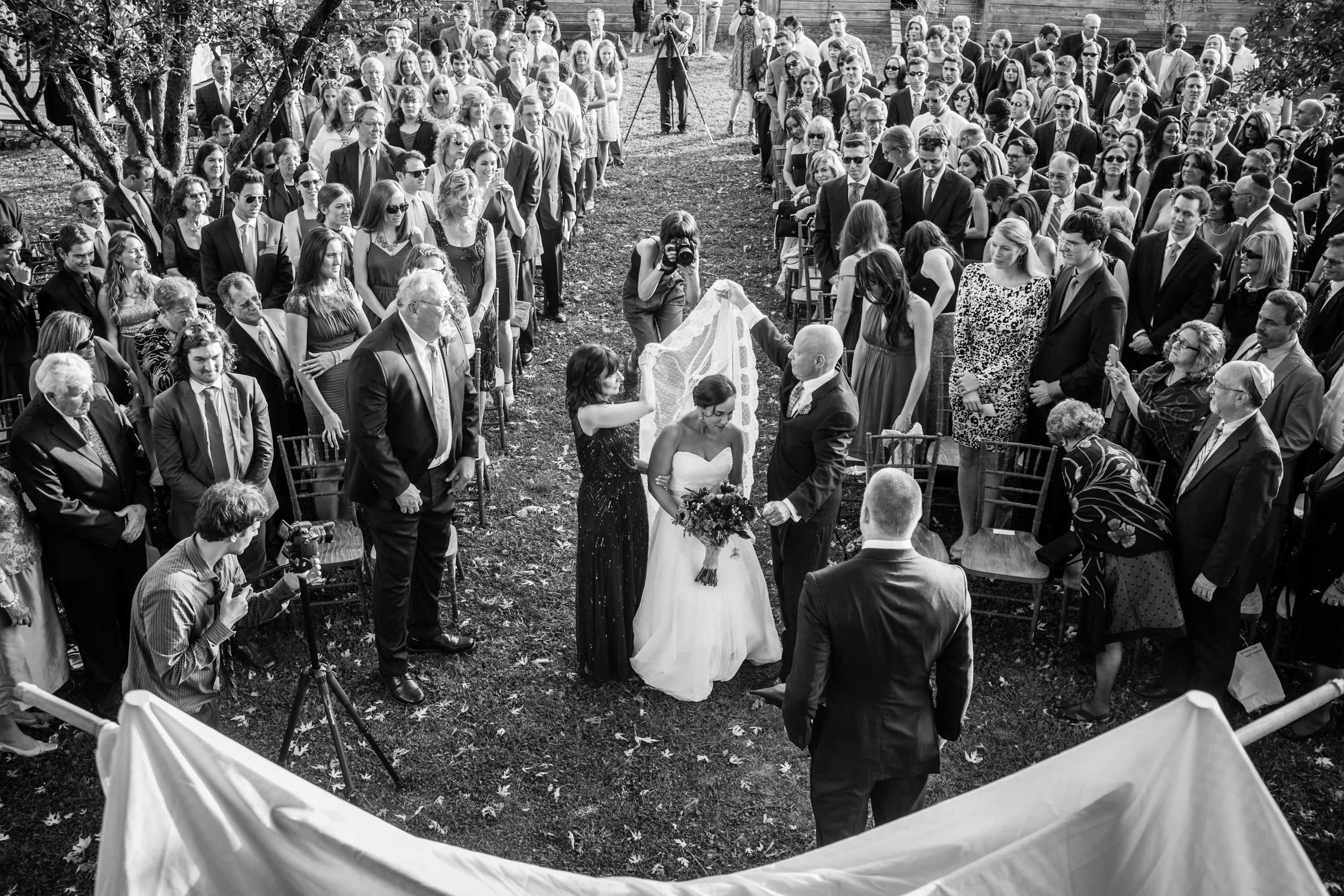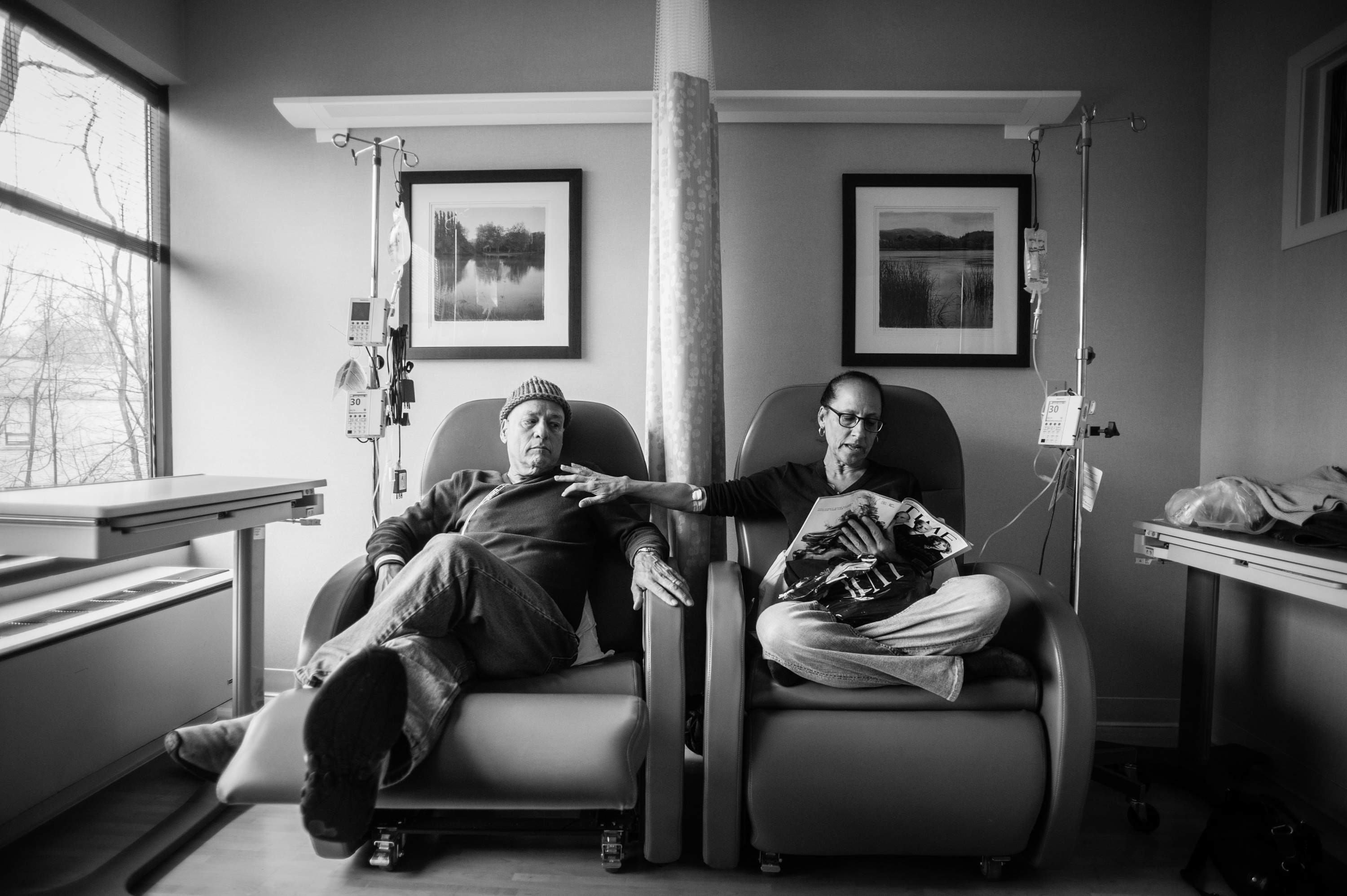Photographer Nancy Borowick captures the end of her parent’s life and their battle with cancer in her book, The Family Imprint.
By Anna Meyer
Grief and death are hard to talk about, and sometimes losing someone close is something we refuse to talk about at all. Even at funerals, or upon hearing news of someone’s passing, it’s hard to find the right words to console or discuss life and the transition out of it.
“As a society, we avoid talking about death, yet much like life itself, it is part of the universal human experience,” explains humanitarian photographer Nancy Borowick. “We all know how the story ends, so perhaps if we discuss it more, we can not only [begin] to understand it with this knowledge and awareness, we can also take advantage of the time we have left.”
Borowick speaks out of experience, as she faced the loss of both of her parents before her thirtieth birthday.
When Borowick’s parents were both diagnosed with stage-four cancer, her natural coping mechanism was to get behind her camera lens and capture what she saw. Losing both parents within a year of one another was something she never could’ve prepared for, but inevitably she collected photos, notes and dialogue and created “The Family Imprint” to share her family’s story with the world. What was originally a project known as Cancer Family Ongoing, and one that was published nationally in such publications as The New York Times, the bound book was made available earlier this month. Currently, Borowick is on tour promoting the book, with a gallery of photographs and mementos from the project on view in Manhattan until June 15th.
As an artist, Borowick has created a book that feels more like a personal scrapbook than something off of a mass printer, and she shares the grief and raw beauty behind a family faced with losing parents. Although the book doesn’t try to hide the harsh reality of cancer and its physical and emotional destruction, Borowick captured the life and love shared in the final moments rather than singularly focusing on the darkness of death.
Although the right words to describe grief and death may be hard to come by, Borowick has offered a touching view in which others in similar situations may need to hear and what others can learn from through empathy. To further explore Borowick’s intentions and experience with this project, I asked her a few questions about how “The Family Imprint” came together and what she hopes readers will take away from it.

Anna Meyer: As a photographer, taking photos of your parents during their journey helped you grieve and process what was happening. Do you think others should take more picture of their dying loved ones?
Nancy Borowick: I think everyone has their own way of dealing with grief, fear, and death. For me, my way was with my camera. Photography gave me a context and a language through which I could try to understand what was happening in front of me. While I do encourage photographs, as they have the ability to completely freeze a moment in time, I think any form of archiving and journaling is extremely important. It all depends on how one can express themselves and find understanding. Many people shared their personal regrets regarding their own experience of loss, after having seen my photographs. They wished they had documented, journaled, or at least asked certain questions of their loved ones when they were dying. I made sure to note these things because I didn’t want to have these same regrets and I knew time was limited.
I encourage people to not be fearful and to communicate with their loved ones… let them tell their stories, let them be remembered, and it will be the most important and special gift you can give to yourself and your family. It is amazing how much I have already begun to forget about my parents in these last few years… and I know with time, I will forget more. These photographs, these stories, they are my memory and they are my most valuable possessions on this Earth. I often tell people that one of the most important lessons I learned during this time was that once someone is gone, their stories are gone with them. This is why it is important to ask questions, and talk, because you will never get that time back, or those stories, after they are gone.
AM: If you were only able to publish one photograph from your project, which photograph would you publish?
NB: Well, there are the images from the project that are the most meaningful to me and there are the ones that I think best tell the story as a whole, in one frame. The one image that I believe best embodies the larger story is the one I call “His and Hers Chairs.” This photograph is important to me and to the story, for many important reasons. This was one of the first photographs I took in this “project” and in many ways, it sums up the experience of my parents in this time. Here is my mom and my dad, sitting side-by-side, having poison (chemo) pumped through their bodies because they both have stage-4 cancer. Nothing about this makes any logical sense, yet I find a way to see something else in this reality. They are in this together, and this is beautiful and comforting for me. They can understand and empathize with the other in ways that most could not, and I think this was important for them, and their relationship, to share this bond. This is a story about love, and family, and living in the face of mortality; cancer is just the situation that brought us to this place. While they were in this with together, however, they also had to deal with the realities of their diseases and lives as individuals, and I think their body language in this frame truly captures their differences; mom saw her cancer and treatment as a job to be crossed off her to-do list while dad struggled to get through each day. I realize that this is not entirely surprising, as Dad was newly diagnosed with cancer where as Mom had been in and out of breast cancer treatment for almost 18 years.
AM: Was there ever a time in which you didn’t feel like completing the project or seeing it all the way through?
NB: Looking back, I believe I never truly thought of this as a project to be completed. I will always be photographing my life and my family. My parents are gone now, and that chapter may have closed, but life continues… it has to. There were moments, like at the end of my mom’s life, where I did not take as many photographs as I had done earlier, but I think that had to do with the fact that reality was catching up to me, and maybe I was beginning to be fearful of losing her, having just lost him. My camera was my safety net- it allowed me to get close yet it gave me a distance, and helped me be there and be present without completely falling a part. At times, it was a distraction from the heaviness of my reality. I was always doing a dance, wearing the hats of photographer and daughter at different times. As a photographer, I spend the majority of my time experiencing the world through my camera, so it felt natural to continue in this way of seeing.

AM: Was there anything about the cancer experience that you didn’t include in the book or that you purposefully left out?
NB: I hope not. I tried to include everything that I could to tell the most honest story of our experience. As I say in my book, there is no cookie-cutter way of dealing with death. This was just one example of how a family dealt with their circumstances. Cancer was just one note in the song of their lives, of our lives, and I wanted to sing all of the songs of our lives with this book. I am, and have always been, an open book so it was no surprise that when confronted with this experience, I would want, and need, to share. Death is a part of the universal human experience and I think the more we talk about it, the more we can appreciate life and the time we have left. I hope this book reminds people of this. This experience has truly informed my life and my path moving forward. Biggest lesson I learned? Life is short. Cliché, I know, but it’s cliché because it’s true. Mom told us not to be fearful, and I try to live by her words with each day I am lucky enough to be here.
AM: What do you think a picture captures that a memory cannot?
NB: I think photographs have the ability to capture, freeze and highlight a moment in time that memory just cannot do. The moment happens, and then it is gone, and life continues with more moments and memories to be had. These photographs are a truthful record of my parents and my family in this time. I think they capture the essence of who my parents were, in the moments of both pain and strength, and I think remembering and being reminded of these things is extremely important. If all I had were staged smiling photos of my family at birthdays, what would that really tell me about the life we lived together and who were really were? I think I documented this time in my life because I desperately wanted to hold onto memory. I have always been nostalgic, and this has always been important to me because in many ways, these photographs help inform me of where I came from and who I will become in the future.
AM: Do you think you’ll see these pictures differently over time?
NB: I have often wondered if in time I will see these photographs in a new and different way. Already, I have begun to experience just that, as time slowly begins to pass by. Every time I shared or exhibited the photographs, I learn new things about myself and the images. One thing I find most special about photography is its ability to share a moment and invite the viewer to connect and experience the moment through their own personal, contextual lens. Everyone brings something different to the table when looking at photography, and to hear what others have thought or taken away from the images has allowed me a deeper understanding of what they are truly all about, beyond the obvious. As a photographer, sometimes you are too close to your subjects and you need someone, a step removed, to share perspective and insight. This will allow you to gain new understanding of what you experienced and what you are seeing in the images. This is a gift and I continue to feel extremely grateful for the audience engagement that has resulted from sharing the work in this way.

Anna Meyer is The Riveter’s Digital Editorial Assistant. She is a Minneapolis native currently pursuing journalism and English at the University of Kansas. You’re most likely to catch her either throwing back espresso shots, planning for her next trip abroad or writing down ideas for stories in her notebook. Follow her on Instagram (@annavmeyer) and stay updated with her work via her personal website.




